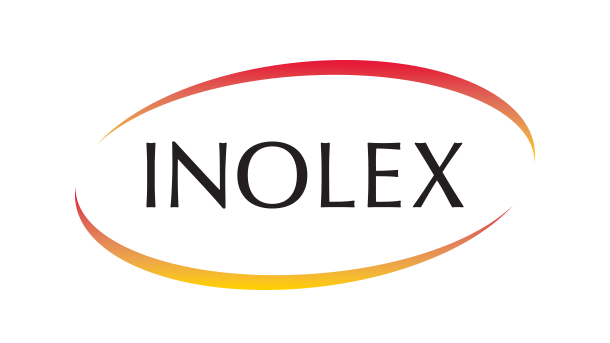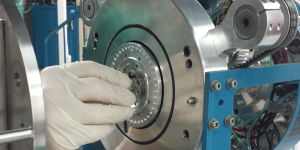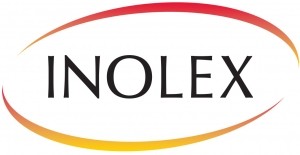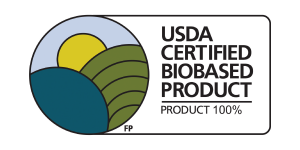Promotional Features
Goodbye Greenwashing: Certified Biobased Content Brings Transparency to Natural Claims
Natural cosmetics and personal care products are not just a fleeting trend but rather a movement that is disrupting the entire industry. The natural and organic personal care market is expected to be a $22 billion industry by 2024 (1). Consumers all over the world are increasingly seeking more plant-based materials for nearly all aspects of their lives, and industries including packaging, energy, clothing, personal care and especially food are making the switch.
The rise of plant-based eating is driven by multiple consumer concerns including reducing environmental impact of meat production, protecting animal rights, and supporting a healthy diet. In the US between 2014 and 2017 there has been a 600% increase in Americans identifying as vegan (2). Even the term “plant-based” has transformed the vegan food space by making it more accessible to those who want to indulge in these healthier-for-you-and-the-planet options but do not want to completely give up animal products. The increased inclusivity of veganism, vegetarianism, flexitarians and even juicing all are grounded in consumption of more plants. This trend – which is parallel and intertwined with the wellness trend -- has manifested in the cosmetic industry in the demand for natural, plant-based ingredients and packaging.
The Greenwashing Challenge
One of the challenges faced by natural and plant-based brands across the industry is the increasing consumer distrust of marketing, label claims, and advertising of products claiming to be “natural and “green.” This is largely because of “greenwashing,” when a product appears to be natural and eco-friendly because of its packaging, logos, colors chosen, or use of plant/nature images, however the product itself is not truly natural or eco-friendly. Today, if you have a truly natural brand or product you need additional support and validation from an outside resource to support the efforts of your own marketing department. As consumers are trying to find brands that identify with their personal values and preferences, the sentiment that “everyone has their own definition of natural” is no longer sufficient. The personal care industry needs to assist consumers with easy and accessible ways to identify and trust authentic plant-based brands.
The combination of the intensified consumer interest in plant-based materials with their growing skepticism of marketing claims requires a solution that can be accomplished by certifying plant-based content through third-party organizations. Third-party certifications facilitate consumer trust and understanding of product labels. The best way to accurately and empirically demonstrate product eligibility for eco-label certifications is to submit product ingredients for laboratory analysis, such as carbon-14 testing.
Ingredient verification through carbon-14 testing
Third-party authentication of personal care and cosmetic product ingredients is vital to validate natural-source claims. In response, manufacturers, distributors, and other industry stakeholders often opt to measure the biobased (biomass-derived) content of product ingredients through carbon-14 analysis. Since biomass contains a known amount of the radioactive isotope carbon-14 while petroleum-based ingredients do not contain any carbon-14, the percentage of carbon in a material derived from recently living sources, such as plants, can be calculated. Thus, according to standards like ASTM D6866, carbon-14 testing, which is applicable to liquids, solids, and gases, determines the amount of biomass-based material used in the formulation of a product compared to more readily available and less expensive petrochemical-derived alternatives (3).
Carbon-14 test results are reported as a percentage of biobased content, representing the portion of the carbon in the product that is sourced from biomass resources. A product wholly comprised of plant-based material will result in 100% biobased content. Material that is a mix of biomass and petroleum sources will have a result that ranges between 0% and 100% biobased content. For example, a result of 80% biobased content means that out of all the carbon in the product, 80% is biomass-based and 20% is petroleum-based – so it is not truly all natural. If carbon-14 results yield 0% biobased, this indicates the product is completely comprised of petrochemical material (4).
Measuring a product’s biobased content is used as an effective marketing tool, allowing manufacturers and distributors to communicate the use of biobased ingredients to consumers. This too fulfills consumer desire for transparency. There are several third-party certification programs, such as the United States Department of Agriculture (USDA) BioPreferred® Program, that recommend or require carbon-14 testing for eligible products to display certified biobased eco-labels on products.
Certifying plant-based content
Biobased certifications and eco-labels allow manufacturers and distributors to visibly demonstrate the use of plant-based content to consumers, strengthening product appeal. The USDA BioPreferred® Program promotes the use of biobased products through its two-part Voluntary Labeling Program and Federal Procurement Preference Program.
The goal of the Voluntary Labeling Program is to help consumers identify biobased products available in the market (5). Under this program, applicants must submit their products to an approved testing laboratory to measure the biobased content following the ASTM D6866 Standard. To qualify for the certification and attendant USDA Biobased label, the percent of biobased content must meet or exceed the established minimum biobased content standards of the appropriate product category (5).
Case Study: INOLEX, Inc.
INOLEX is a personal care ingredients manufacturer that specializes in using sustainable practices, following the 12 Principles of Green Chemistry, to create biobased ingredients without compromising expected performance. INOLEX certifies ingredients under several industry standards and has recently added USDA BioPreferred® certifications to its portfolio. The USDA BioPreferred® program allows INOLEX to achieve a certification that displays the specific percentage of biobased content for materials containing over 62% biobased content (5). This allows for the recognition of using primarily biobased feedstocks, even if it does not result in 100% natural-sourced ingredients. Lisa Gandolfi PhD, director of marketing of INOLEX, stated, “the USDA BioPreferred® Program filled a gap in the industry certification landscape by providing a standardized and quantitative measurement of the biobased content of an ingredient.”
She added that the USDA BioPreferred® biobased content certification was especially valuable to the launch of INOLEX’s new natural cationic technology, AminoSensyl™. The amino-lipid technology is leveraged into hair care and skincare under two different products: AminoSensyl™ HC and AminoSensyl™ SC, respectively.
Although there were preceding technologies in the cationic hair conditioning category that were COSMOS approved, these were not 100% biobased. Amino-lipid technology from INOLEX is the first of its kind to accomplish 100% naturality in a cationic conditioning agent. Using Beta Analytic (a testing laboratory specializing in carbon-14 analysis) and the USDA BioPreferred® Program, INOLEX was able to differentiate its 100% natural-sourced technology from competitors on the market that were not entirely biobased. This enables consumers to discern that the ingredient not only complies with the COSMOS standard like its competition but that it is also 100% derived from plant sources. Both AminoSensyl™ HC and AminoSensyl™ SC contain 100% USDA-certified biobased content.
The USDA certification process was also applied to existing products in the INOLEX portfolio. INOLEX certified other unique technologies with high sustainability profiles that are primarily biobased. ProCondition™ 22 is a sustainable improvement on amidoamines with 83% USDA-certified biobased content. Carbon-14 testing by Beta Analytic plus the USDA biobased certification scheme support the sustainability profile of this ingredient, despite that it is not 100% naturally sourced. INOLEX has recently initiated the certification process with the USDA BioPreferred® Program for all its ingredients that meet the minimum 62% biobased content criteria for personal care intermediates.
Similar to the certification of personal care intermediates, finished goods companies can certify not only formulations that are 100% plant-based but also formulations that may have a few percentage points of outstanding non-biobased material. This certification allows for specific and empirical results of the naturality of an ingredient or formulation reducing the affect of intentional or inadvertent greenwashing.
Conclusion
Validation of personal care and cosmetic ingredients is key for manufacturers and distributors as consumer demand for natural, plant-based products remains high and an increased expectation of transparency in advertising emerges. INOLEX demonstrates its ability to visibly portray biobased ingredients through the use of Beta Analytic’s carbon-14 test, yielding results that qualify for the USDA BioPreferred® biobased content certification. The combination of the carbon-14 test and biobased content certifications fosters greater clarity for consumers to identify plant-based ingredients and finished products in the marketplace.
Authors:
Audrey Wesson, INOLEX, https://inolex.com/pc
Haley Gershon, Beta Analytic, www.betalabservices.com
REFERENCES
1 Dallmeier, Lorraine. “Global Organic Beauty Market to Reach $54bn by 2027.” Formula Botanica, June 21, 2019. https://formulabotanica.com/global-organic-beauty-market-22bn-2024/.
2 Oberst, Lindsay. “Why the Global Rise in Vegan and Plant-Based Eating Isn't A Fad (600% Increase in U.S. Vegans Other Astounding Stats).” Food Revolution Network, January 18, 2018. https://foodrevolution.org/blog/vegan-statistics-global/.
3 ASTM International - Standards Worldwide. Accessed October 12, 2019. http://www.astm.org/cgi-bin/resolver.cgi?D6886-18.
4 “Biobased Analysis - Radiocarbon Dating or Carbon 14.” Beta Analytic - ASTM D6866 Lab, Nitrates in Water Testing. Accessed October 12, 2019. https://www.betalabservices.com/biobased/carbon14-dating.html.
5 “Product Categories.” BioPreferred. Accessed October 12, 2019. https://www.biopreferred.gov/BioPreferred/faces/pages/ProductCategories.xhtml.







